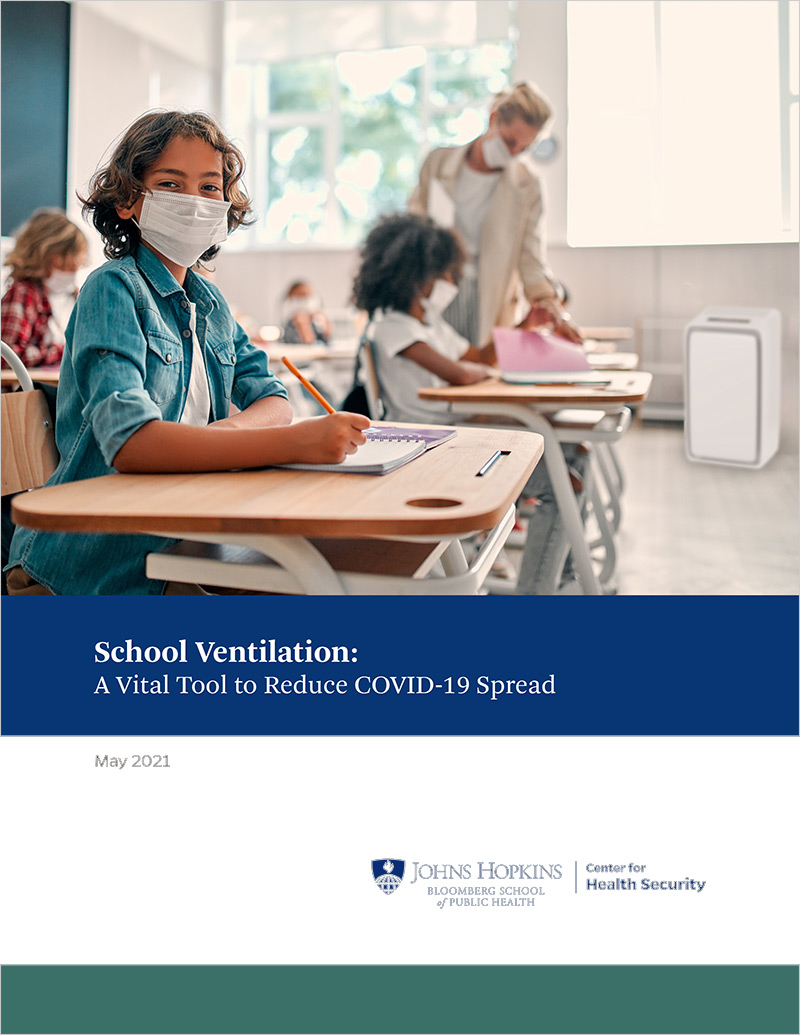New Report: School Ventilation: A Vital Tool to Reduce COVID-19 Spread
Six recommendations for how school administrators and decisionmakers could use flexible funds available under the American Rescue Plan to improve healthy air in schools
Center News

May 26, 2021 – The Johns Hopkins Center for Health Security at the Bloomberg School of Public Health released a new report calling on kindergarten through 12th grade (K-12) school administrators to urgently invest in ways to provide healthy air in schools to increase safety during the COVID-19 pandemic and potential future respiratory disease outbreaks, as well as to improve student learning.
The new report, School Ventilation: A Vital Tool to Reduce COVID-19 Spread, reviews how improvements in building ventilation can reduce the risks of disease transmission. The report also summarizes current ventilation guidelines for K-12 schools and shares the results of an analysis finding that ventilation improvements are a cost-effective public health measure compared to enhanced (“deep”) cleaning that focuses on surfaces.
“Many K-12 schools in the United States do not have good ventilation, which has negative health impacts on health and learning,” wrote the authors. “Improving ventilation systems may give children and school staff healthier indoor air quality now and for decades in the future. This would provide a healthier environment for non-pandemic times and potentially reduce the risks of future infectious disease outbreaks.”
The report :
- Improve school ventilation now by bringing in as much outdoor air as the heating, ventilation, and air conditioning (HVAC) system will safely allow and upgrading filtration.
- Purchase HEPA air filtration units to be placed in classrooms and common occupied spaces.
- Use only proven technologies for improving indoor air quality: appropriate ventilation, HEPA filtration, or ultraviolet germicidal irradiation. Schools should not use chemical foggers or any “air cleaner” other than filtration and ultraviolet germicidal irradiation.
- Stop enhanced cleaning, disinfecting, “deep clean” days, and any other expensive and disruptive cleaning. Fomite (surface) transmission is not a major driver of the spread of SARS-CoV-2.
- Install mechanical ventilation systems where none exist and upgrade those that do not meet current standards.
- Convene a federal task force dedicated to school air quality to develop guidance for long-term, sustainable, cost-effective improvements to indoor air quality in schools. This guidance should include accountability measures to assess improvements.
You can access the new report here.
